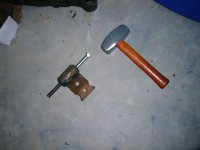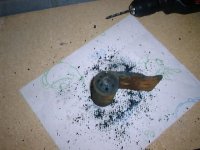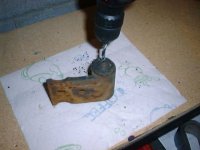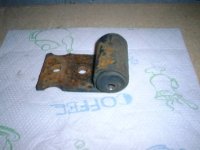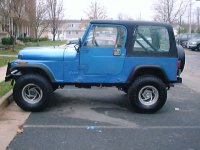Suspension Lift for Older Jeeps
Please note that this is for an older Jeep with leaf springs. If you have a new Jeep TJ or JK or any other vehicle with coils, take a look at the the TJ lift article
When I went to lift my CJ7, I had to do some background research. I soon came to find that a suspension lift of about 2.5 inches on a vehicle with leaf springs is actually a pretty simple thing (in theory, if not in installation).
The main concept is that the vehicle sits on springs, which connect the body to the axels. These springs are attached to the body at each end, and to the axle in the middle. As the axles move up and down because of bumps, the springs bow and flex, with the intention of keeping the body still. A suspension lift is nothing more than new springs (although because of these new springs, you have to replace some other parts). The new lifted springs will be arched more, and thus when attached to the axles they will push the body further up in the air.
What's it take for a suspension lift? - ver.1.5
Please note that this is for an older Jeep with leaf springs. If you have a new Jeep TJ or JK or any other vehicle with coils, take a look at the the TJ lift article
When I went to lift my CJ7, I had to do some background research. I soon came to find that a suspension lift of about 2.5 inches on a vehicle with leaf springs is actually a pretty simple thing (in theory, if not in installation).
The main concept is that the vehicle sits on springs, which connect the body to the axels. These springs are attached to the body at each end, and to the axle in the middle. As the axles move up and down because of bumps, the springs bow and flex, with the intention of keeping the body still. A suspension lift is nothing more than new springs (although because of these new springs, you have to replace some other parts). The new lifted springs will be arched more, and thus when attached to the axles they will push the body further up in the air.
Once you install new springs, you will notice that when you go to attach you shocks, they no longer fit. This is because the axle and the body are farther apart, and since the shock attaches to both, and can only extend so far, the old shocks will be too short. You will need to buy new shocks that are specifically made for a lifted vehicle - I would recommend Rancho RS9000, because they are adjustable (you can make your ride softer or harder depending on the setting).
Last edited:

